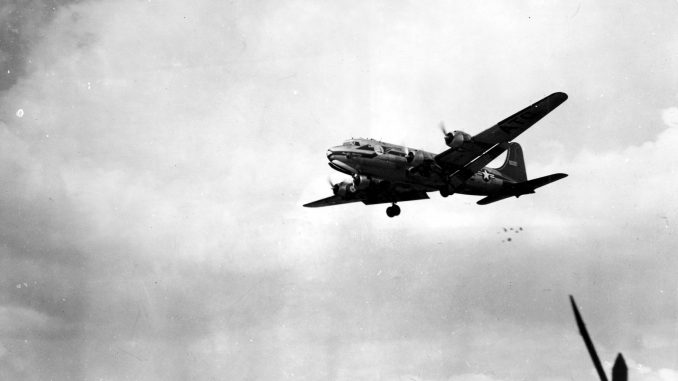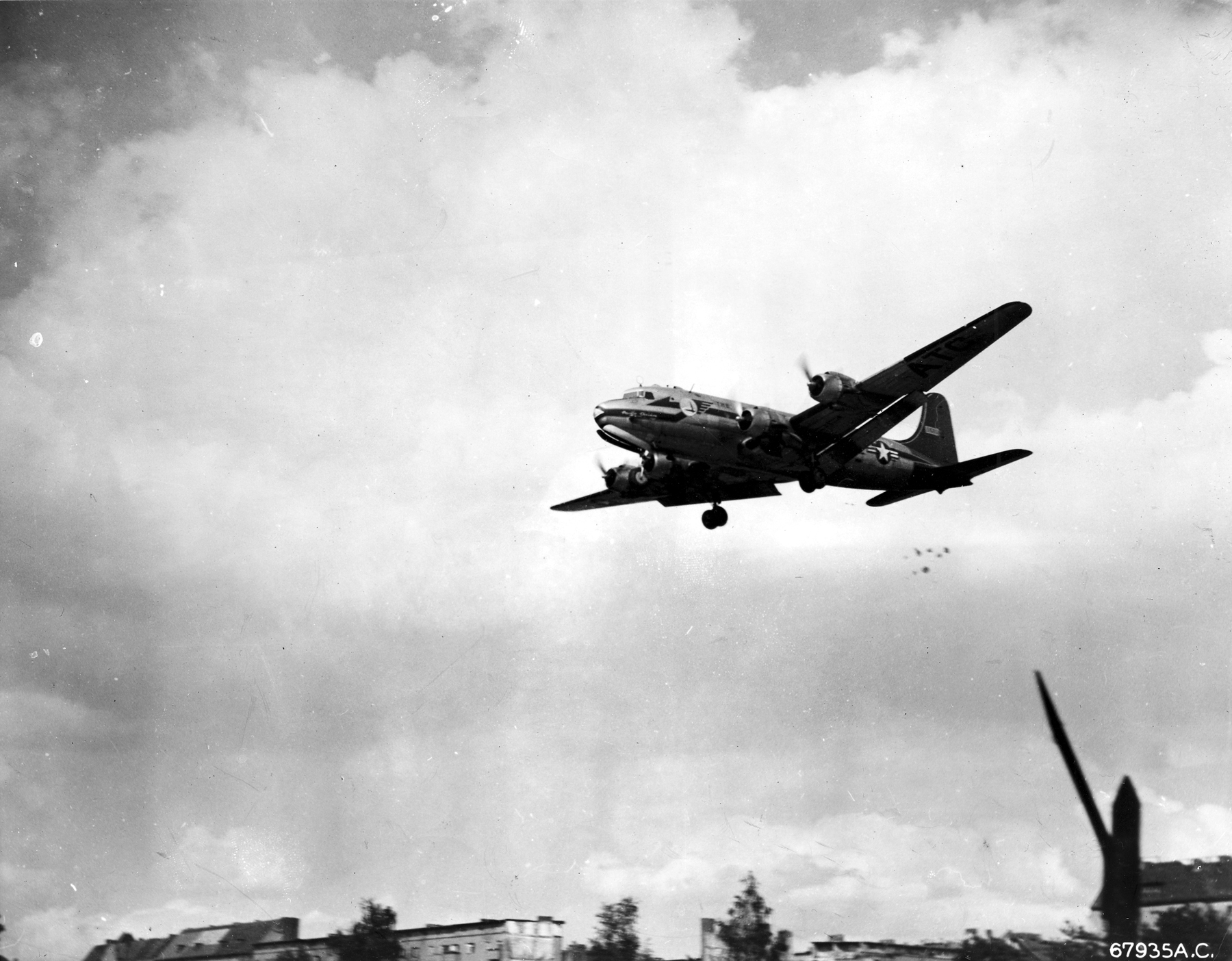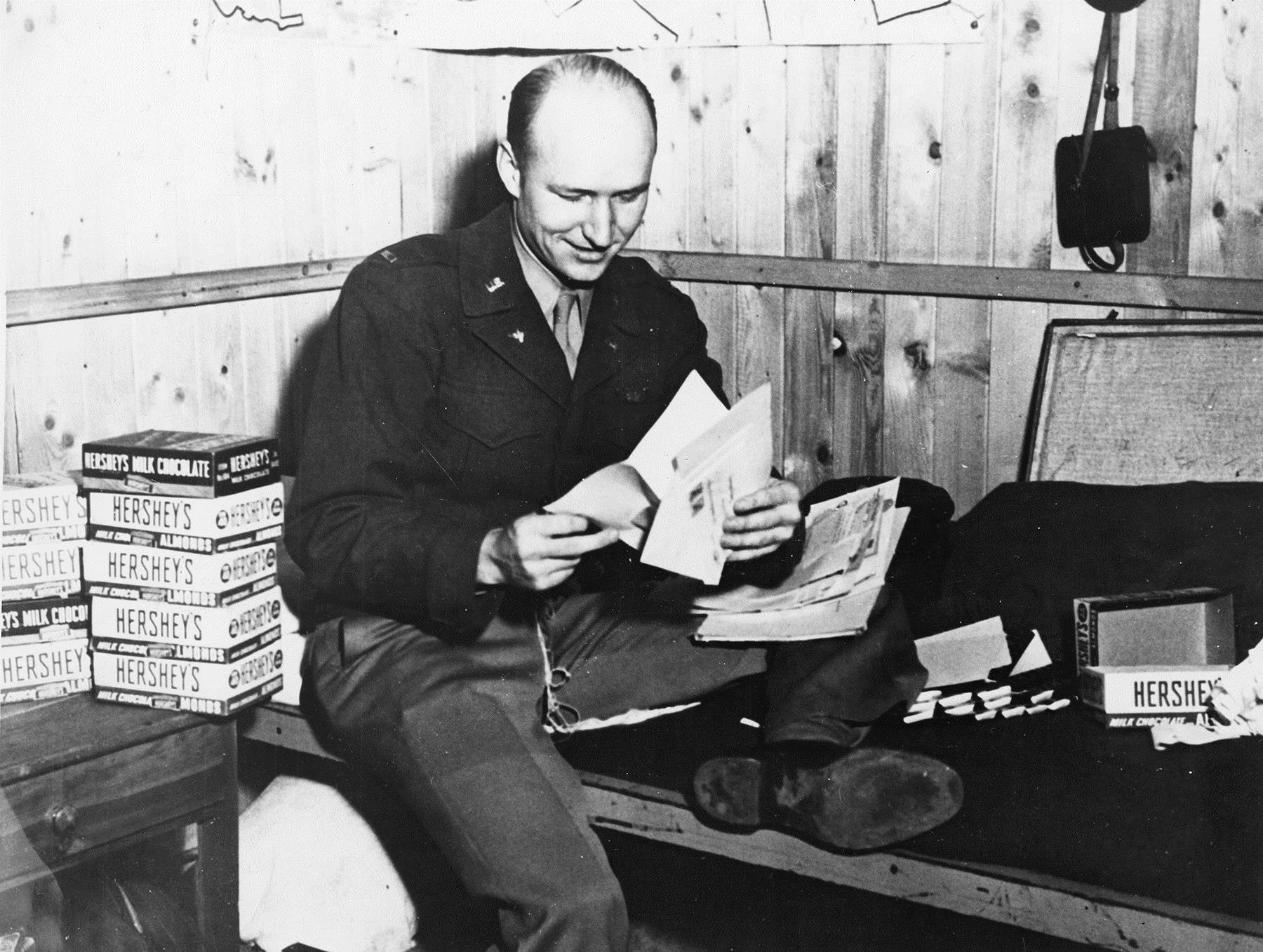

PRESS RELEASE – This month is National Candy Month, bringing to mind cravings for dark chocolate, caramels or lollipops for most people. The National Museum of the U.S. Air Force has a different way to celebrate this month’s sweetness … with the story of the “Candy Bomber.” In June 1948, just a few months after the Air Force became a separate service, the Soviet Union blocked all roads, railways and rivers going into the city of Berlin, which was still in ruins after World War II. They also cut all power, so the 2.5 million inhabitants of West Berlin faced certain starvation. There were, however, three narrow air corridors left open, as the Soviets thought the Allies’ airlift capabilities would be negligible. The United States, Britain and France agreed to join forces to keep West Berliners supplied with coal and food, and above all, to keep them free from Soviet rule. The Berlin Airlift, nicknamed “Operation Vittles,” lasted 15 months, and nearly 2.3 million tons of supplies were flown into Berlin during 277,000 flights (there was one flight every three minutes)! The workhorses for this incredible humanitarian airlift were C-47s and C-54s, and that is what makes this whole airlift operation so amazing – none of the gigantic cargo aircraft of today, such as the C-17 Globemaster III, the C-5 Galaxy or the C-130 Hercules, were in existence!
During the Berlin Airlift, a pilot named Lt. Gail S. Halvorsen was impressed by a group of polite German youngsters watching the airlift operations from outside the fence of the Tempelhof airdrome that he promised to drop candy to them. He used handkerchiefs and scraps of cloth as miniature parachutes, and word of his personal humanitarian mission spread to the United States. Eventually donations of thousands of pounds of candy and hundreds of handkerchiefs and other pieces of scrap cloth reached him. By January 1949, more than 250,000 midget parachutes with treats attached had been dropped. Halvorsen earned the nickname “Candy Bomber,” and in recognition of his action, he received the 1948 Cheney Award “… for an act of valor, extreme fortitude, or self-sacrifice in a humanitarian interest.”
Humanitarian airlift efforts remain a key component and top priority for the U.S. Air Force, and these types of missions have positively impacted the lives of countless individuals around the world.
To learn more about Lt. Halvorsen, check out these books available in the Air Force Museum Store:
– “Berlin Candy Bomber” by Gail Halvorsen, $18.98
– “The Candy Bombers” by Andrei Cherny, $22
– “Mercedes and the Chocolate Pilot” by Margot Theis Raven, $17.95
A lesson plan focusing on the Berlin Airlift, geared toward students in grades 4-8, is available at www.nationalmuseum.af.mil/shared/media/document/AFD-130725-009.pdf. For more information about the museum’s Berlin Airlift exhibit, as well as photos and videos, visit www.nationalmuseum.af.mil/factsheets/factsheet.asp?id=1891.

The next time you pick up a bar of chocolate, think of Lt. Halvorsen’s mission of goodwill in the 1940s as well as the relief provided around the world by the U.S. Armed Forces today.
About The National Museum of the U.S. Air Force
The National Museum of the U.S. Air Force, located at Wright-Patterson Air Force Base near Dayton, Ohio, is the world’s largest military aviation museum. With free admission and parking, the museum features more than 360 aerospace vehicles and missiles and thousands of artifacts amid more than 17 acres of indoor exhibit space. Each year about one million visitors from around the world come to the museum. For more information, visit www.nationalmuseum.af.mil.



Colonel (ret) Gail S. Halverson was my commander at the 7350th Support Group, Tempelhof Central Airport, Berlin, Germany in 1970. He sent me this article. I currently live in Berlin and am the Vice President of the Berlin Historical Association. Colonel Halvorsen has stayed in touch with me over the many years and we are always (my wife, Heidi, and I) that as he approaches his 95th birthday he still has so much energy and is an inspiration to all. The Berlin Airlift set the example for we Air Force veterans who followed.